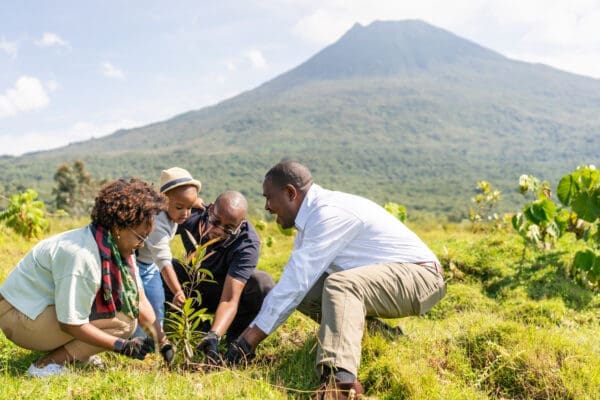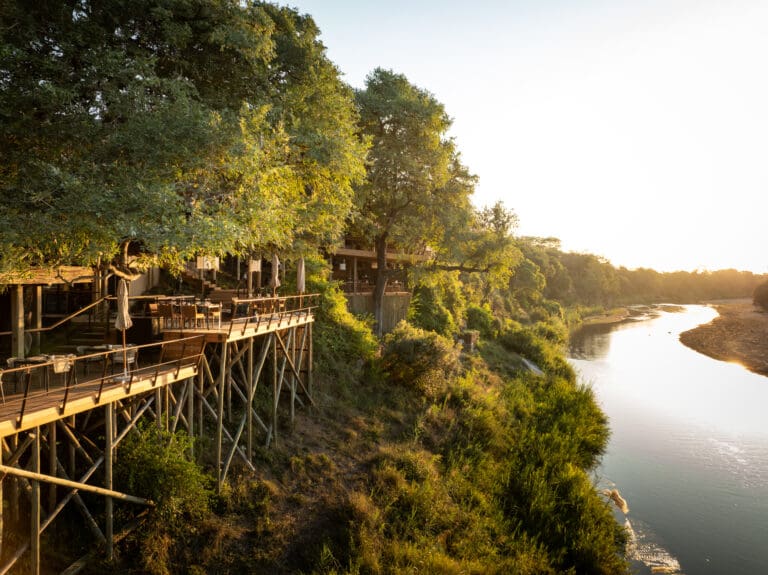Charles Nsabimana’s mantra is always moving and poignant: “If you take care of the nature, it will take care” of us. Singita, a well-known conservation and ecotourism brand, has properties in South Africa and Zimbabwe.
You may at first glance think, “African Lodges are totally different from the hotels I run, so I have nothing to learn.” My friend, that is a wrong attitude. By 2025 and likely to continue increasing, travelers will be looking for brands that have meaning, purpose, and fight for a cause.
Climate change is a serious issue, and there are few better causes to fight for.
Herein the term ‘sustainability’ is righteous but ultimately reductive. Sustainability is an incentive to achieve the minimum certification. What Singita and other brands are doing goes far beyond sustainability and into the realm of regeneration, ‘land stewardship’ as well as ‘cultural stewardship’ where the concept is to not only preserve the history of the region but to also fully embrace it by bringing it to the forefront of the guest experience and design.
Triple Bottom Line (TBL).
We see in this example a company which has made meticulous efforts to promote the conservation and environmentalists. These efforts became a core part of its brand storytelling and have won Singita a cascade of positive brand perception, earned media, year-round uplift, and stratospheric revPAR.
This hospitality brand is perhaps the best example of the reciprocal relationship implied in the promise of triple bottom line. While this sustainability framework of people, planet and profit was largely proposed to highlight the benefits for brand recognition, corporate culture and employee retention – that is, ‘mission-driven brands’ or ‘brands with purpose’ – it has an additional application for hospitality.
All guests, and especially luxury travellers, vote with their wallets to support leisure, corporate, or group stays that place environmental awareness at the forefront of efficiency protocols in both the back of house as well the overall guest experience.
The future of many hotel brands depends in part on the stewardship programs they have implemented to generate demand and growth. It’s this ‘power of purpose’ (as Singita calls it) that will help hotel brands evolve to deepen their benefits for guests, the planet and, yes, the income statement. We will now focus on the work that Singita is doing in partnership with conservation NGOs so you can understand the full scope of this brand DNA.

Singita’s conservation efforts
Singita means ‘place of miracles’, and its meaning has never been more deeply felt than now. Singita was founded in 1993 and opened its first Ebony lodge. Over the next 20 years, it expanded to cover over 1 million acres of protected land throughout South Africa, Zimbabwe Tanzania and Rwanda. The goal is to not only maintain wildlife reserves but also rebuild ecosystems, restore nature and showcase these efforts through sustainable tourism.
Over the past few decades, Singita has emerged as a leader in the conservation of 45,000 acres of untouched wilderness in South Africa known as the ‘Big Cat Country’ (due to its lion and leopard populations). Its mission extends beyond just providing luxury accommodation. A part of its 100-year vision includes facilitating the protection and preservation large areas in the African wilderness for the future.
This long-term planning can be a valuable lesson for any hotel, as, for instance, rewilding an entire wilderness landscape may take up to 15 years. You can’t just ‘wing it’ or replant rows of a single species of tree; rewilding requires patience, knowledge and gentle oversight to let the land do its thing.
The company has committed to returning the landscapes back to their natural state. This will allow wildlife to roam without human interference. The company’s combined resources and efforts will be focused on four main areas of contribution: Stop and reverse biodiversity loss; Zero further extinction of species; Halve their ecological footprint; and Community Collaborations.
Singita also partners with conservation NGOs, as mentioned above, in the regions where it operates. Their community partnership programs – the cultural stewardship side – encompass a range of socioeconomic interventions that support and promote access to quality education, professional skills development, job creation, rural enterprise development, environmental awareness, sustainable resource use and women’s empowerment.
Singita launched its carbon offset program in 2020. This program compensates for emissions caused by staff flights and guests’ bed nights. This commitment builds on Singita’s investment in renewable energies, while monitoring energy consumption across all properties.

Nature-based Tourism in Every Region
According to the saying, the secret is in the detail. The rest of this article will list some details about the conservation projects that have been undertaken by each Singita Property to demonstrate how they are different and adapted to locality, while still fitting into the TBL framework.
Singita Kruger National Park & Sabi Sand (South Africa):
- Supporting the rehabilitation and wilding of rhinos left orphaned after poaching
- Funding highly-skilled anti-poaching units, including canine units that protect against rhino poaching and poisoning in the Sabi sand.
- Support Panthera – the NGO using scientific research to restore populations of Leopards in this area, which are now amongst the most visible in Africa
- Singita Community Culinary School provides professional chef certification to selected youths of nearby communities
Singita Grumeti (Tanzania):
- Supporting Grumeti Fund to transform 350,000 acres of land into a safe haven for Great Migration as well the Grumeti Fund anti-poaching teams
- Elephant monitoring and local eco-research
- Community outreach programmes in primary and early education, culinary training, enterprise development, or women’s empowerment
Singita Malilangwe (Zimbabwe):
- After successfully introducing the black and white rhino, we support the anti-poaching units.
- Families that depend on subsistence farming and are affected by unpredictable rainfall patterns can benefit from a nutrition program designed to help them support their school-age children.
- Conservation education program to help communities understand the benefits of regenerative lands management
Singita Volcanoes National Park (Rwanda):
- Protecting Rwanda’s mountain gorillas
- Reforestation buffer zone for Rwanda’s Volcanoes National Park
- Monitoring Program in Partnership with the Dian Fossey Gorilla Fund
- In 2021, a third culinary academy will be established for local young adults to assist them in pursuing a career in the hospitality industry
Overall, hospitality is a field that strives to bring people from all over the world together and create joy. As we all strive to create a more sustainable and brighter future, there is still much work ahead.
It’s also very profitable to have a 100-year vision and establish a TBL mentality. With this in mind, and as the ‘proof is in the pudding’ from these Singita lodge examples have highlighted, if we take care of nature, nature will not just take care of us in return but also provide strong financial returns for years to come.



